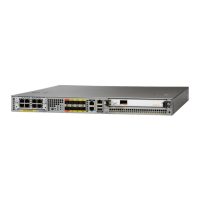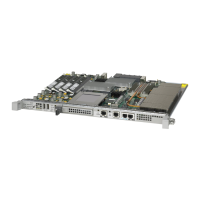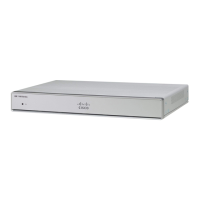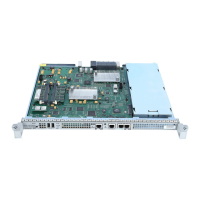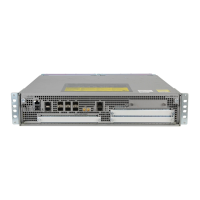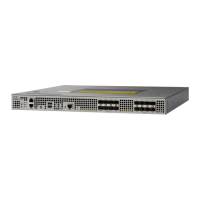12-12
Cisco 10000 Series Router Quality of Service Configuration Guide
OL-7433-09
Chapter 12 Sharing Bandwidth Fairly During Congestion
Configuring Fair Bandwidth Sharing During Congestion
Configuration Example for Configuring a Class Policy and Dropping Packets Using Tail Drop
Example 12-2 creates a policy map named policy1 that contains two classes (class1 and class2) whose
match criteria were previously defined (see Example 12-1 on page 12-8). The class1 configuration
requests a specific bandwidth allocation and specifies the maximum number of packets that can be
queued for the class. Because the class1 configuration specifies the queue-limit command, the router
uses tail drop to drop packets. The class2 configuration specifies only the bandwidth allocation request;
therefore, the policy map assumes a default queue limit based on the configured bandwidth rate. The
policy1 service policy is applied to PVC 1/32 for outbound packets.
Example 12-2 Configuring a Class Policy and Dropping Packets Using Tail Drop
Router(config)# policy-map policy1
Router(config-pmap)# class class1
Router(config-pmap-c)# bandwidth 3000
Router(config-pmap-c)# queue-limit 32
Router(config-pmap-c)# class class2
Router(config-pmap-c)# bandwidth 2000
Router(config-pmap-c)# exit
Router(config-pmap)# exit
Router(config)# interface atm 1/0/0
Router(config-if)# atm pxf queuing
Router(config-if)# interface atm 1/0/0.1 point-to-point
Router(config-subif)# pvc 1/32
Router(config-subif-atm-vc)# service-policy output policy1
Configuring a Class Policy and Dropping Packets Using WRED
To configure a class policy and to drop packets using WRED, enter the following commands beginning
in global configuration mode:
Note Repeat Steps 2 through 5 to assign additional traffic classes to the policy map and to configure a class
policy for the traffic classes.
Command Purpose
Step 1
Router(config)# policy-map
policy-map-name
Creates or modifies a policy map. Enters policy-map
configuration mode.
policy-map-name is the name of the policy map.
Step 2
Router(config-pmap)# class class-map-name
Assigns a traffic class to a policy map. Enters policy-map class
configuration mode.
class-map-name is the name of a previously configured class
map.

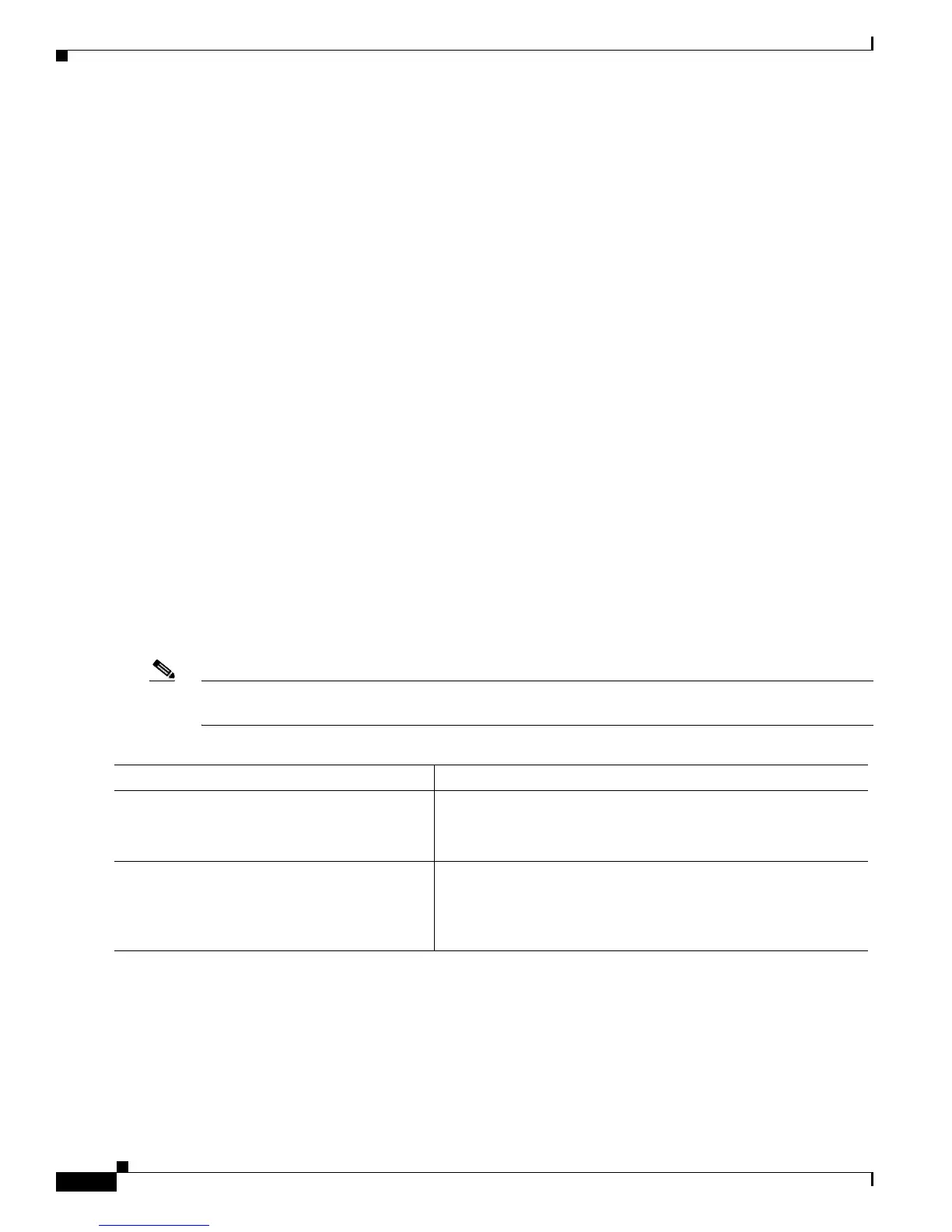